Morrow's honeysuckle leaves and flowers
Image credit: Leslie Mehrhoff, Woody Invasives of the Great Lakes (WiGL) Collaborative
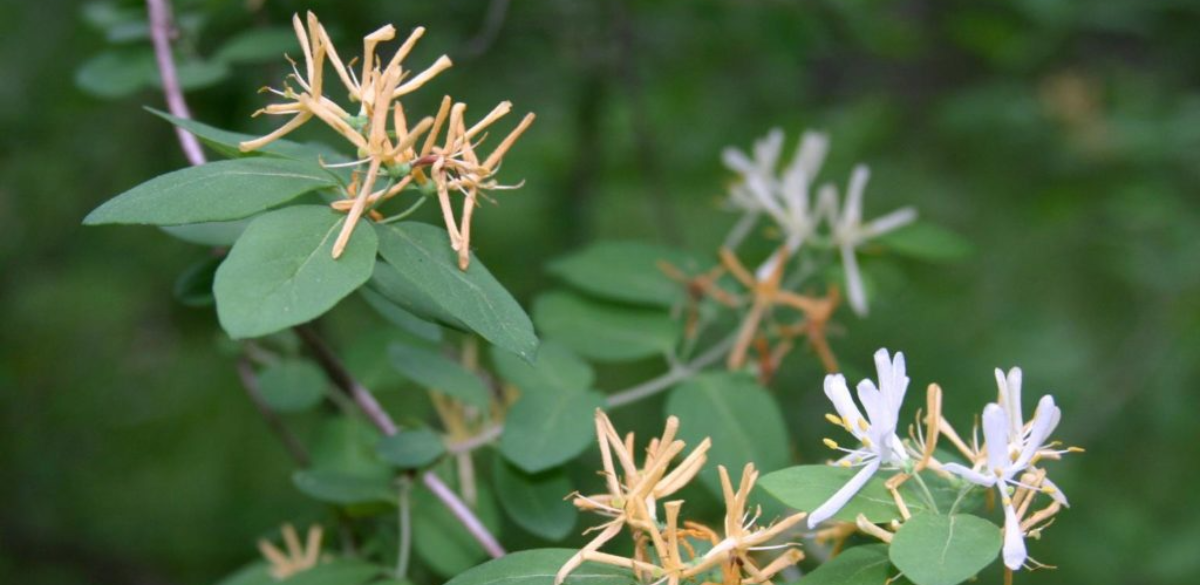
Morrow's honeysuckle leaves and flowers
Image credit: Leslie Mehrhoff, Woody Invasives of the Great Lakes (WiGL) Collaborative
Invasive honeysuckle, a woody shrub/small tree in the Caprifoliaceae family, is an understory invasive that produces large amounts of seeds and outcompetes many native species. It’s also sun- and shade-tolerant and can live in many different soil, moisture, and habitat conditions. There are three invasive honeysuckles in our area: Morrow’s honeysuckle (Lonicera morrowii), Tatarian honeysuckle (Lonicera tatarica), and Bell’s honeysuckle (Lonicera x bella). Honeysuckles are often planted as ornamentals but have a tendency to escape into natural habitats. Common identification characteristics are:
Note: These plants can be confused with the native American fly honeysuckle (Lonicera canadensis). To differentiate between native and invasive, a section of the stem is clipped off and observed; native honeysuckle will not have a hollow pith through the middle of the stem, while invasive honeysuckles will.
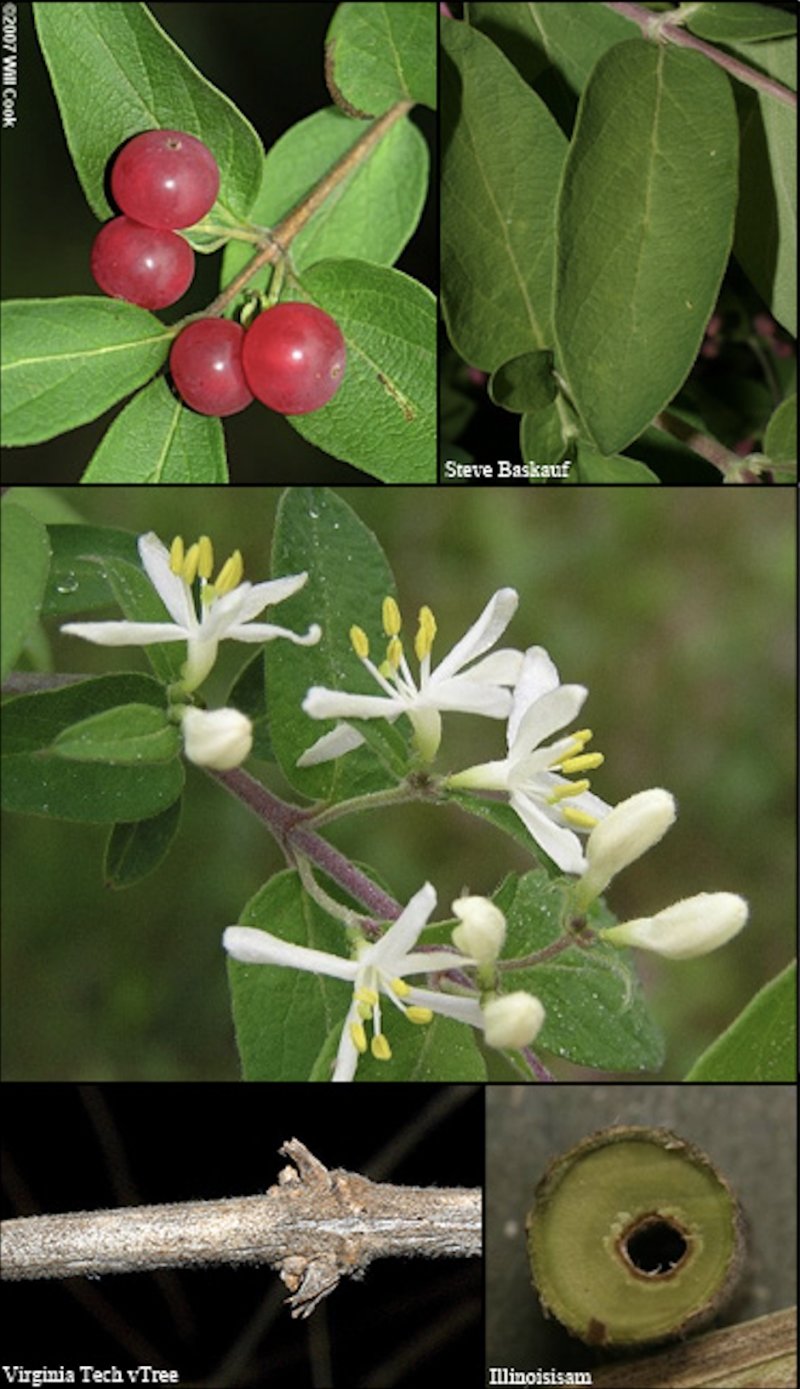
Morrow's honeysuckle identifying features
Image Credit: Midwest Invasive Species Information Network (MISIN)
For more information, visit MISIN's website
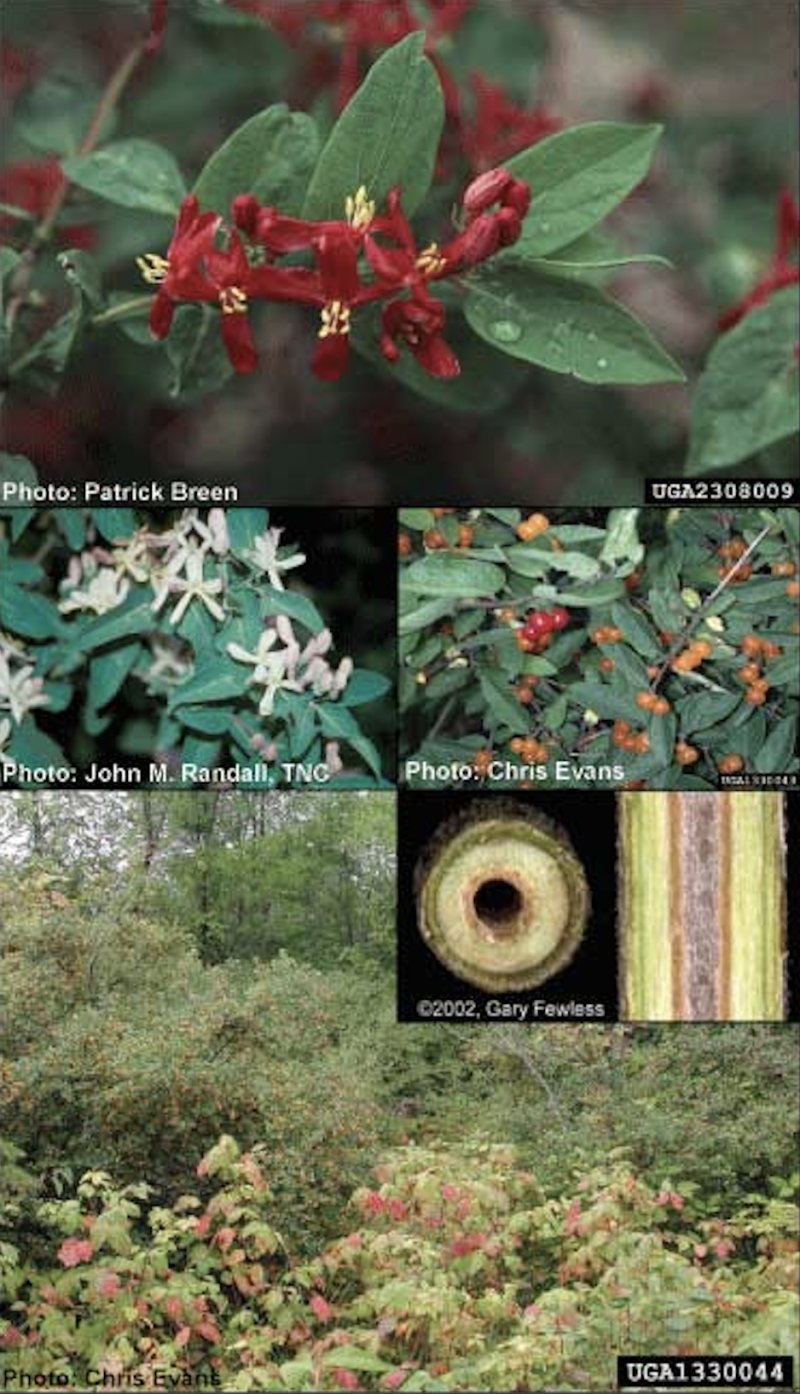
Tatarian honeysuckle identifying features
Image Credit: Midwest Invasive Species Information Network (MISIN)
For more information, visit MISIN's website
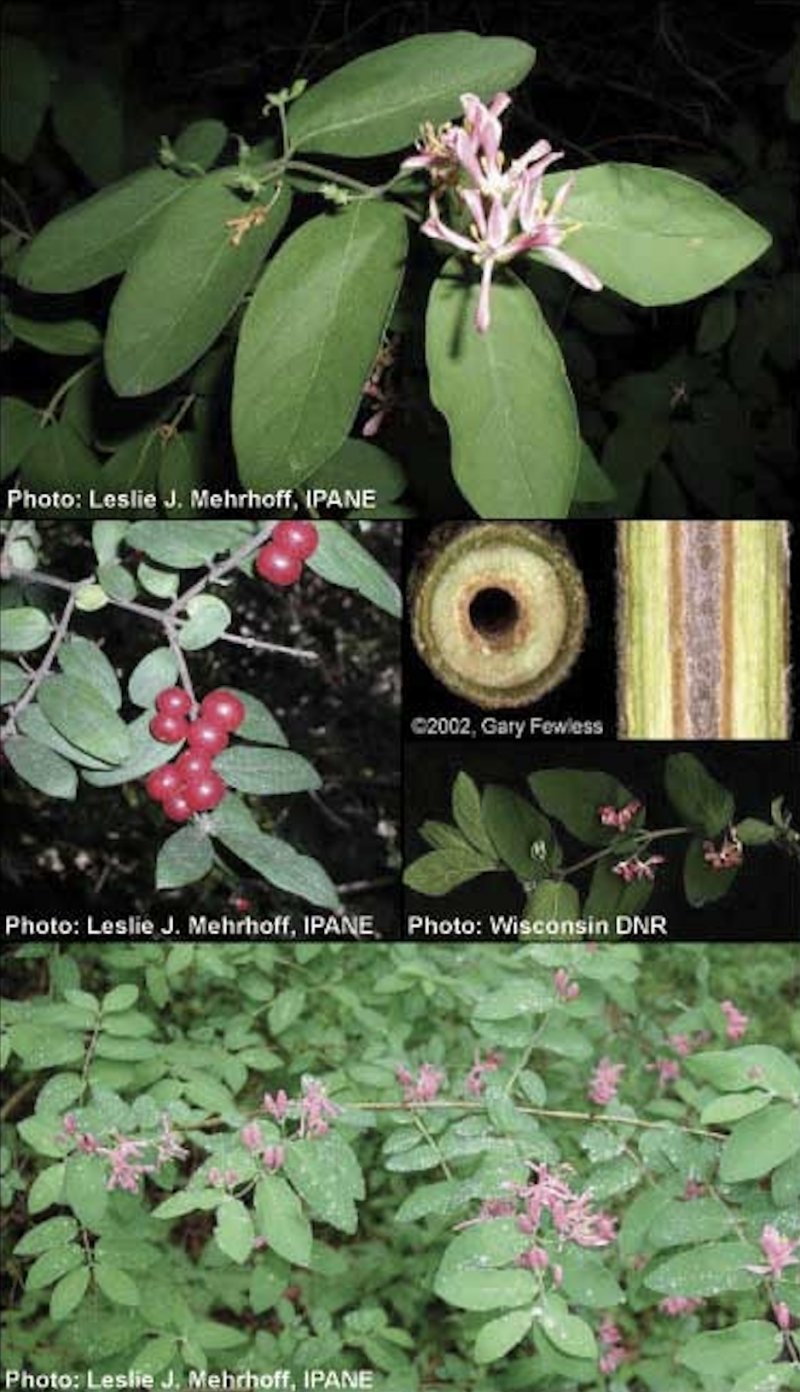
Bell's honeysuckle identifying features
Image Credit: Midwest Invasive Species Information Network (MISIN)
For more information, visit MISIN's website
Invasive honeysuckle is a highly aggressive species that produces copious amounts of seeds and saplings and can quickly take over an understory. Here at KISMA, invasive honeysuckle is another major invasive species that we have at multiple sites. It’s important to revisit sites as honeysuckle seeds are viable in the ground for multiple years, and removing all seedlings is critical. KISMA prioritizes the removal of seed trees and satellite populations first to prevent the further spread of invasive honeysuckle. Steps to remove them include:
Note: It's very important to remove seeds and seed-bearing trees first, as this is the main reproduction strategy of invasive honeysuckles.
Great native alternatives to invasive honeysuckles include native cherries, such as pin cherry (Prunus pensylvanica) and chokecherry (Prunus virginiana). Serviceberry (Amelanchier sp.) is also a wonderful alternative providing a well-needed food source to native wildlife. Other species like highbush cranberry (Viburnum trilobum) and other native shrub species are also great.
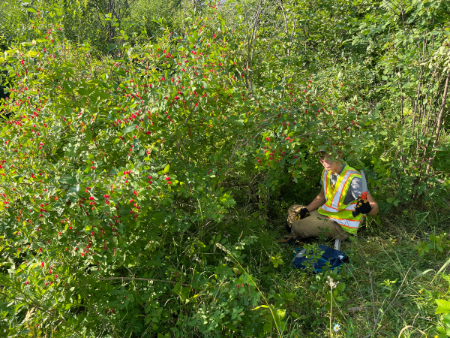
Invasive honeysuckle being managed by KISMA crew member
Image credit: Sigrid Resh
A native lookalike for invasive honeysuckles is American fly honeysuckle (Lonicera canadensis). American fly honeysuckle is one of our earliest flowering understory shrubs with pale yellow flowers that hang down. Notably, American fly honeysuckle has stems that are not hollow, unlike the invasive species of honeysuckle listed above.